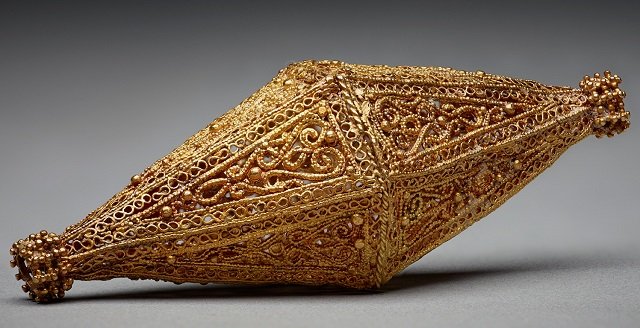Biconical bead
- Object Name
- Biconical bead
- Culture / Site
- Egypt or Syria
- Medium
- Gold with filigree, granulation, and "rope" wire
- Date
- 10th/11th century
- Dimensions
- Length 7.2 cm
- Credit Line
- Photograph © The Aga Khan Museum, Toronto, AKM610
- Section
- Driving Desires
- Description
The wealthy and powerful Fatimid Caliphate (909–1171), which ruled across North Africa, Egypt, and Syria, was active in Mediterranean, Indian Ocean, and trans-Saharan trade networks. Its rulers vied with the Umayyads of Spain for access to West African gold and for control of major trading cities like Sijilmasa. This large and elaborate Fatimid bead is composed of two filigree cones joined along a central seam, a shape that originates from antiquity. Filigree is a complex technique that is based on the soldering of fine-gauge wires to a base sheet, where goldsmiths twist thin sheets of metal and create a visually compelling decoration. Biconical beads became dispersed widely across the Mediterranean and the Sahara in the medieval period. Small terracotta beads from Gao, Mali, feature the same double-cone shape, showing evidence of this form’s movement.
